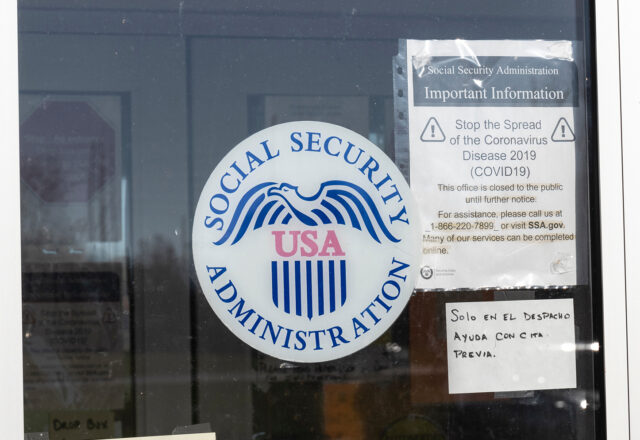
Effects of Suspending In-Person Services at SSA Field Offices on Disability Applications and Allowances
Abstract
In this study, we examine the effect of the suspension of in-person services at Social Security Administration (SSA) field offices during the COVID-19 pandemic on applications and the characteristics of applicants to see if certain groups of beneficiaries were disproportionately affected. We examine how applicant characteristics vary by the mode of application—in-person, phone, or online—to understand what groups of applicants were most likely to use in-person services prior to the suspension. We use a difference-in-differences empirical approach that enables us to estimate the impact of the suspension of in-person services on the volume of applications and the demographic composition of applicants while controlling for other pandemic-related factors. Our analysis data consists of application information from SSA’s Structured Data Repository, combined with applicant work history information from the Electronic Claims Analysis sTool. We combined the administrative data with location information of SSA field offices and county information from the American Community Survey and the New York Times COVID-19 repository.
The paper found that:
- There were systematic differences in the characteristics of applicants by mode of application. In-person applicants were older, less likely to have completed high school, and less likely to speak English compared to phone or online applicants.
- The suspension caused a 6-percent decrease in the volume of applications, implying that not everyone who wanted to apply in-person was able to apply using other modes. The effect was larger for Supplemental Security Income (SSI) applications compared to Social Security Disability Insurance (DI) applications.
- The suspension of in-person services caused some would-be in-person applicants to apply by phone, but it did not cause an increase in the volume of online applications.
- We did not find evidence that the suspension disproportionately affected groups of applicants defined by educational attainment, age, or English-speaking status.
- Our estimates imply that in-person service suspensions explain more than 50 percent of the decline in SSI and DI applications during the pandemic.
The policy implications of the findings are:
- Policies that aim to raise awareness and use of online services could significantly reduce application barriers to eligible individuals; however, they may help some types of eligible individuals more than others.
- Understanding the characteristics of applicants who use the different modes of application could be useful in helping the government efficiently allocate resources to support access to the application process.
- Our results indicate that a better understanding of how application mode affects the completeness and quality of SSI or DI applications could ultimately lead to potential application supports (such as access to an online chat with an SSA representative) for modes of application that tend to be associated with relatively lower application quality.







